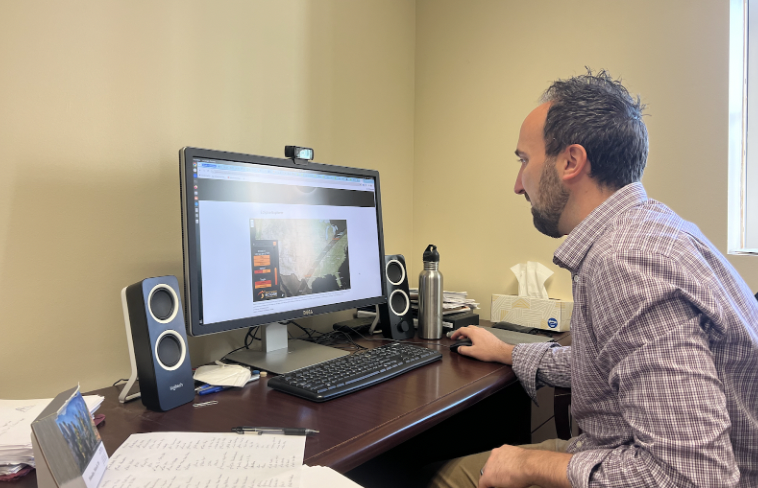A swarm of about 150 people came rushing out the doors of
McFarlin Memorial Auditorium around 4 p.m. yesterday. Huffing and puffing, many
gathered in the SMU Quad and others took cover wherever they could find.
Though there wasn’t an active shooter on the ground, these people were running as if there were.
What you might have seen if you were in the Quad at that time was part of a simulation organized by the Office of Police and Risk Management.
OPRM organized this simulation called an active shooter/lockdown training exercise to prepare students, faculty, staff and community members what to do when there is an active shooter around them.
Kim Cobb, director of Media Marketing, urged students to participate in simulations like these as “it is in the best interest of all us to know what to do if something goes wrong.”
Active shooter situations are particularly difficult to respond to because “the average shooter commits his crime and it’s [usually] over in 12 minutes,” said Lisa W. Morris, emergency manager at SMU.
At the beginning of the training exercise, participants watched a 6-minute-long, instructional video called “Run. Hide. Fight.,” which showed what steps to take when they hear sound of gunshots.
A few moments after the video ended, participants jumped off their seats as they heard three gunshots fired near one of the exits in the auditorium. Following the instructions in the video, most participants ran to the nearest exit. Others tried to take cover in between the seats.
Participants did exactly what they were taught. They ran, hid and prepared themselves to fight.
Describing his experience, senior Anthony McAuliffe said that though he was expecting what was going to happen, he “didn’t expect the time that it did happen.”
Though many students felt the training was a rewarding exercise, for wheelchair-bound senior Cindy JoSantillai, it was quite a different experience.
She said she felt frustrated as she couldn’t do much in the situation as the video they all watched “completely ignored” what handicapped people could do in an active shooter situation.
She hoped future simulations would encompass safety tips for everyone, including those who are impaired in one way or another.
Other students suggested each building have its own active shooter/lockdown emergency training exercise as an active shooter could appear anytime in any building on campus. Therefore, it is important that students “know the building.”
Student Kimberly Elmazi said she was expecting someone to come and shoot after she watched the video. Therefore, in her opinion, it negated the purpose of an “emergency” training.
Elmazi suggested the participants should be shown the video after they have experienced the mock active shooter situation in order to better simulate it, and to make it more unpredictable.
For more information what to do in an active shooter situation, visit readyhoustontx.gov.












